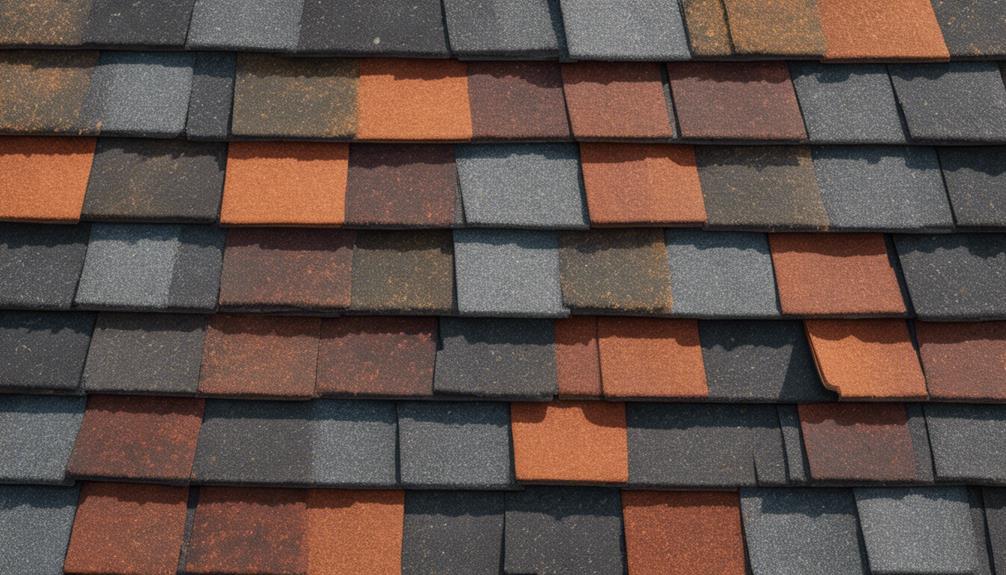What Are the Types of Insurance Roof Repair?
Hone in on the diverse world of asphalt shingles, where choices abound to cater to every taste and practical need.
There are three main types of insurance roof repair coverage: comprehensive home insurance, specialized roof insurance, and limited coverage policies.
Comprehensive home insurance covers a wide range of perils, including roof damage from storms, vandalism, or fire, providing thorough protection for significant repairs.
Specialized roof insurance targets specific roofing structures, offering tailored coverage for various materials and types, which is useful for homeowners with unique roofs or those in weather-prone areas.
Limited coverage policies provide restricted protection, often covering only specific damage like natural disasters, and may exclude wear and tear or maintenance issues. Homeowners should carefully review their policy terms to understand coverage extent and limitations. Selecting the right insurance type is essential for protecting a home’s roof.
What Is Insurance Roof Repair?
Insurance roof repair is the process where an insurance policy covers costs for repairing or replacing a damaged roof, depending on the policy details and damage type.
Coverage generally includes repairs from sudden events like storms or vandalism but excludes damage from wear and tear or neglect. The roof’s age can also affect coverage limits.
Homeowners should report damage quickly, document it with photos, and keep maintenance records. An estimate from a certified roofing contractor can help streamline the claims process, maximizing insurance benefits for necessary repairs.
When Does Insurance Pay for Roof Repairs?
Insurance covers roof repairs primarily when damage is caused by sudden events like storms or vandalism.
Claims are typically honoured if the damage is not due to wear and tear, poor maintenance, or negligence. For instance, if a tree falls on a house during a storm, homeowners may receive compensation for repairs.
The roof’s age and condition prior to the incident significantly affect coverage. A newer or well-maintained roof is more likely to receive full compensation, while roofs over 20 years old or showing neglect may result in limited coverage.
To ensure a successful claim, homeowners should promptly report damage to their insurer and document it thoroughly. This includes taking photos, keeping maintenance records, and obtaining estimates from roofing contractors. Following these steps can improve the likelihood of securing adequate financial support for necessary repairs after an insurable event.
Where Can You Get Insurance Roof Repair Services?

You can obtain insurance roof repair services from specialized roofing companies that assist with insurance claims. This company provides estimates and helps homeowners navigate the claims process.
Astral Roofing boasts over 20 years of experience in the roofing industry, specializing in various services including roof repairs, replacements, and maintenance for both residential and commercial properties.
Contacting this professional for estimates can support your claims. It’s wise to consult multiple roofing contractors to compare services and secure the best terms for insurance-related roof repairs.
Who Pays for Roof Repairs With Insurance?
Insurance typically pays for roof repairs when the damage is caused by unexpected events like severe weather or accidents.
Coverage depends on the specific terms of the homeowner’s insurance policy, including the cause of damage, policy specifics, extent of damage, and maintenance records.
Homeowners should review their policies to understand what is covered and ensure they have documentation of regular maintenance to support their claims.
How Can You Maximize Your Insurance Roof Repair Coverage?

To maximize insurance roof repair coverage, understand your policy’s details and keep thorough documentation of your roof’s condition and repairs.
Schedule regular maintenance and inspections annually, and maintain records, including repair receipts, to demonstrate prior care.
When damage occurs, immediately contact your insurer and document everything.
Take comprehensive photos of the damage, including before-and-after shots, and gather evidence of severe weather conditions that may have caused the issue, such as weather report screenshots.
Identify the damage’s cause; unexpected events like storms are more likely to be fully covered than wear and tear. If your roof was in excellent condition before the damage, inform your insurer to help achieve a favourable outcome.
Frequently Asked Questions
What Types of Roof Damage Are Typically Excluded From Insurance Coverage?
Damages from wear and tear, lack of maintenance, or neglect are typically excluded from insurance coverage. Additionally, damages resulting from natural ageing or roofs that surpass their expected lifespan, such as asphalt shingles or metal roofs, often do not receive standard insurance protection.
How Long Do Insurance Companies Take to Process Roof Repair Claims?
Insurance companies generally take a few days to several weeks to process roof repair claims. The timeframe can vary based on claim complexity, necessary documentation, and the insurer’s internal procedures for assessment and approval.
Can I Choose My Own Contractor for Roof Repairs?
Yes, you can choose your own roofing contractor for repairs. However, it’s important to check your homeowner’s insurance policy and consult with your insurer to ensure compliance with their requirements and reimbursement processes.
Does My Deductible Affect the Roof Repair Payout?
Yes, the deductible significantly impacts the roof repair payout. The insurance provider subtracts this amount from the total claim, requiring you to pay the deductible before receiving the remaining funds for the repairs.
Are There Specific Timelines for Filing a Roof Repair Claim?
Yes, there are specific timelines for filing roof repair claims, typically outlined in the homeowner’s insurance policy. It’s crucial to report damage quickly, usually within a few days, to ensure coverage eligibility.